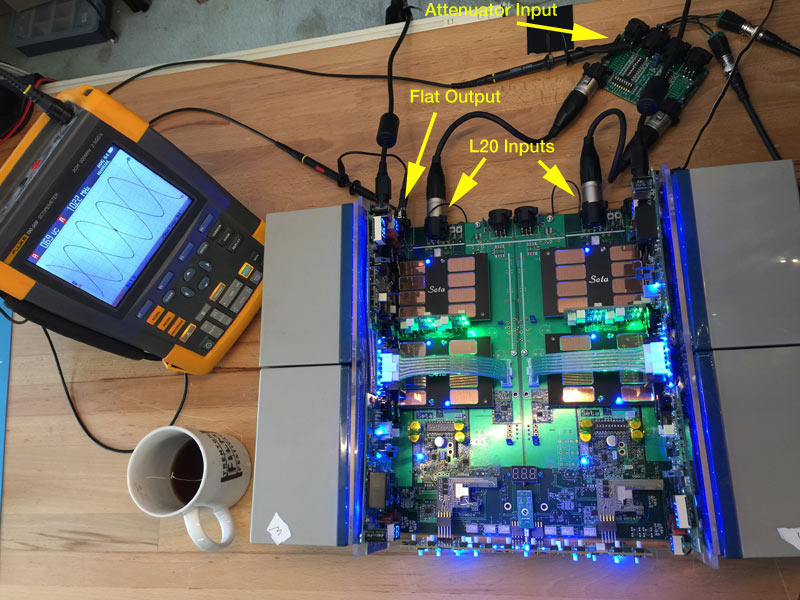|
|

|
|
Seta L20 Performance Measurements Measurements aren't the only factor in evaluating audio equipment performance. However, careful measurements allow us to confirm with certainty that the product sample undergoing QA evaluation meets or exceeds the primary design criteria. Extended listening evaluations always follow! We'd like to highlight the outstanding measured performance of our flagship L20 phono stage. Just like taking a high-performance automobile or motorcycle to the track or 'strip to run it through its paces, we're putting an L20 on the test bench to see what she'll do. The oscilloscope-based tests linked below compared the input signal to the output signal. The input signal was monitored at the input side of a custom, balanced attenuator ("Attenuator Input") and compared against the "Flat" (non-RIAA) output of our Seta L20 mk2 phono stage. The attenuator is adjustable up to -100 dB and has a Thevenin equivalent output impedance of as low as 0.02 Ohms (adjustable between 0.02 and 20 ohms), so the signal at the L20 input was only a tiny fraction of the "input" (blue) scope signal. 200 MHz 10X oscilloscope probes were used to preserve signal bandwidth. The Fluke scope has floating, isolated inputs permitting differential (balanced) measurements. Not shown is the entire setup used for the distortion and RIAA accuracy measurements which used a 2010 Mac Mini running MacOS 10.6.8 and our Mac the Scope™ test and measurement software. XLR cables were used in place of the 'scope probes. The ADC/DAC and measurement preamplifiers used for distortion and noise measurements are proprietary systems developed in-house specifically for this purpose. The multi-input (for the second MC and MM inputs) and RIAA filter daughterboards aren't installed on the L20 motherboard shown in the photo. However, the auto-biasing circuitry is installed (vertical circuit boards with green LEDs between the copper-topped input modules). These are part of the L20 mk2 update and force the input stages into extended Class A operation, improving the sound quality and slightly reducing distortion. Of course, each channel has 16 individual input stages (16 Seta Model L input stages) connected in parallel, a key to the L20's extremely low noise while maintaining an unprecedented (for a phono stage) 20 MHz bandwidth. Also key to the L20's low noise is the massive, 576 watt-hour per channel AGM battery power supplies, sited inside the L20 chassis and having an impedance and noise-sinking ability that's orders of magnitude better than the typically seen power supply filter capacitors. Accordingly, adding massive banks of capacitors to the power supply / circuit boards would not only be redundant, but substantially inferior to what the AGM batteries provide by themselves. Links to Seta L20 measurements
|